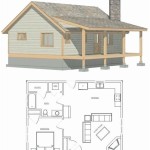Essential Aspects of Home Shelter Plans
Emergencies can strike at any moment, making it crucial to have a comprehensive home shelter plan in place. A well-prepared plan ensures that you and your loved ones have a designated safe haven and know exactly what to do in the event of a disaster. Here are some essential aspects to consider when creating a home shelter plan:
1. Establish a Primary and Secondary Shelter Location
Identify a primary shelter location within your home, such as an interior room on the lowest level with minimal windows. This room should be away from potential hazards like exterior walls and gas lines. As a backup, designate a secondary shelter location outside your home, such as a sturdy building or a car.
2. Stock Essential Supplies
Gather essential supplies and store them in a designated area in your shelter. These supplies should include:
- Non-perishable food and water (at least 3 days' worth for each person)
- First aid kit and essential medications
- Flashlights, batteries, and a portable radio
- Hygiene items, toilet paper, and trash bags
- Whistle or other signaling device
- Copies of important documents (passports, insurance cards, etc.)
3. Develop an Evacuation Plan
Determine multiple evacuation routes from your home and ensure that everyone in your household knows and understands these routes. Practice evacuation drills to ensure that everyone is familiar with the procedures and can react quickly in an emergency.
4. Communicate and Coordinate
Establish a communication plan for contacting other household members and designated family members in case of separation. Exchange contact information and agree on meeting locations. Consider using a mobile app designed for emergency communication.
5. Account for Specific Needs
Consider the needs of all household members, including children, seniors, and individuals with disabilities. Adjust your plan to accommodate medical equipment, dietary restrictions, or any other specific requirements.
6. Prepare for Pets
Don't forget about your pets! Include pet food, water, medication, and leashes in your emergency supplies. Identify pet-friendly shelters or make arrangements for temporary pet care if necessary.
7. Stay Informed and Monitor Conditions
Stay updated with weather forecasts and potential threats. Monitor local news and emergency alerts. If an evacuation order is issued, follow it promptly and calmly.
8. Practice and Review Your Plan
Regularly practice your shelter plan with family members. This ensures that everyone knows their roles and responsibilities and can execute the plan effectively in an emergency. Review and update your plan annually or as needed.
Conclusion
A comprehensive home shelter plan empowers you and your loved ones to respond effectively to emergencies. By incorporating these essential aspects into your plan, you can create a safe and resilient environment where you can weather any storm. Remember, the key to a successful home shelter plan is preparation and practice.

Pin On Shelters

Introduction Land Earth Shelter House Project Plans And Pics Floor Sheltered Homes

Home For Humanity Usa Tiny Shelter Plans Fashion Girls

Free Home Fallout Shelter Plans Design Underground

Modular Square 10 40 Model B Atlas Survival Shelters Shelter Underground Homes

Pin On Home Recreational Life

10x20 Underground Bunker Survival Floor Plans

Gimme Shelter Not Your Grandmother S House Plans

Emergency Container Home Shelters Containerhomes Net House Design Shelter

Sutherlands Complete Home Package The Earth Shelter








